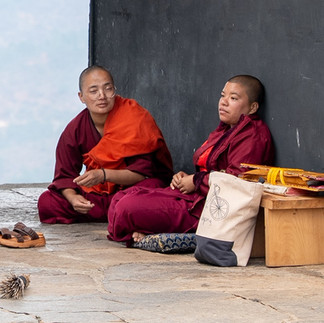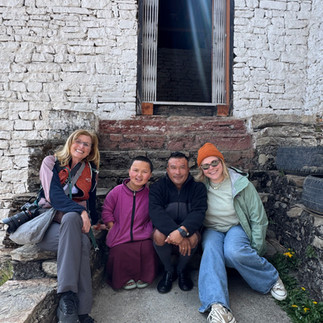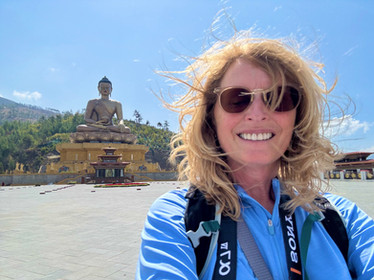Bhutan:Traditions, Temples, and Tranquility: From Thimphu’s Art School to Haa’s Hidden Shrines and Paro’s Sacred Sites
- Laurie Hull
- Apr 25
- 2 min read

Sangchhen Dorji Lhuendrup Nunnery:
Nuns having debates in school. Beautiful location and so serene.
Next, we returned to Thimphu to visit the Institute for Zorig Chusum, where students train in traditional arts like wood carving, painting, and embroidery. Then we continued west to the remote Haa Valley, accessible via the dramatic Chele La Pass—the highest drivable road in Bhutan at over 13,000 feet. We hiked up to the cliffside Kila Goempa Nunnery (from the parking area, ha ha (pun Haa Valley)), but half the group hiked all the way up, traversing high altitude. I was saving myself for the next day's hike to Tiger's Nest. At this nunnery, we met a joyful young monk (nun) named Karma (a friend of our driver Tinley) who shared stories of her daily life and studies. It was an intimate, unforgettable moment, and her happy spirit was contagious.
Yak attack in the country side near the Nunnery. At least I didn't have to milk any this time, like I did in Mongolia.
National Memorial of Chorten: A Stupa near Thimphu which unlike most stupas does not enshrine human remains. Queen Ashi Phuentsho Choden Wangchuck built this in her sons memory.

Another purpose: Elderly care and senior center. Neighborhood elders come to spend their time here.
Lhakhang Nagpo, the “black temple,” and Lhakhang Karpo, the “white temple”—two ancient Buddhist shrines which are said to be among the 108 temples built in one day by the seventh century Tibetan king Songtsen Gampo.

The King of Thailand's Three Day State Visit: A quick pit stop before he arrives.
Buddha Dordenma statue: A gigantic Shakyamuni Buddha statue in the mountains of Bhutan celebrating the 60th anniversary of fourth king Jigme Singye Wangchuck.


Next, the grand finale: the Tiger’s Nest Monastery.

_edited.png)


































































